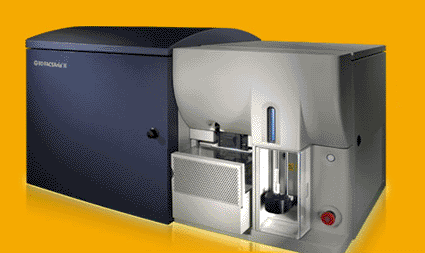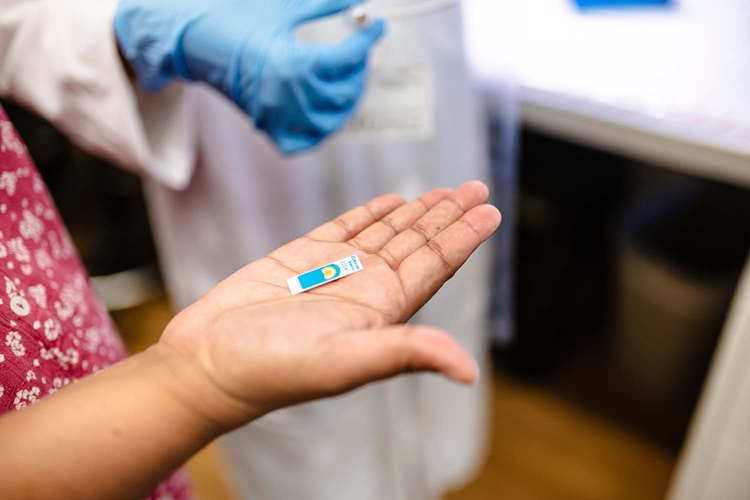Flow Cytometry System Makes Cell Sorting Easier and More Accessible
By Labmedica staff writers
Posted on 31 Jan 2008
Posted on 31 Jan 2008

Image: The BD FACSAria II cell-sorting system, designed for consistent results in sorting across a broad range of applications (Photo courtesy of BD Biosciences).
The first generation BD FACSAria system, which was developed in 2003, brought cell sorting to a broader audience of scientists. The next generation high-performance cell sorter, which was launched in January 2008, is the BD FACSAria II flow cytometry system. It features a number of improvements, which were designed across the system to make BD FACSAria II easier to use and more productive.
The BD FACSAria design is based on a true fixed-alignment flow cell that is gel-coupled to the collection optics. This design minimizes startup time, improves experiment-to-experiment reproducibility, and increases the sensitivity and resolution needed for multicolor applications. BD Biosciences (San Jose, CA, USA), the company that designed and manufactures the cell sorters, offers consulting and support services for technical and application needs and compatible, state-of-the-art instruments, as well as a full line of assays and reagents.
The BD FACSAria II incorporates a new fluidics design that improves aseptic setup and cleaning. New nozzle sizes enable a wide range of particles to be sorted and new nozzle design allows for reproducible insertions. Software wizards and automation simplify aseptic sort setup, drop delay determination, and clog detection.
The new model cell sorter improves both workflow and productivity with improvements across the platform. For example, a universal sort tube collection mount now makes it easier to insert and remove tube holders. In addition, software improvements dramatically cut the time spent on cytometer setup, adjustment, and maintenance.
For aerosol management the BD FACSAria II features a sealed pathway from the sample injection chamber to the sort collection tubes. The BD aerosol management option (AMO) evacuates the sort collection chamber and traps aerosolized particles during sorting.
The sample is introduced via the sample injection chamber into the flow cytometer. During acquisition, the chamber is pressurized, forcing the sample to the cuvette flow cell. Sample injection chamber temperature control and agitation are standard with the BD FACSAria II cell sorter. The BD FACSDiva software controls both sample agitation and temperature settings. It also automates quality control and experiment setup.
The 375-nm near ultra violet (UV) laser option is available to expand the range of application choices. The beam geometry is optimized for most hematopoietic stem cells. The top hat design of the 375 nm near UV laser triples the amount of light at the sample intercept. The 375 nm near UV laser can be operated together with the red and blue lasers.
For many users, the capability of an advanced cell sorter is defined by its flexibility, which in turn is defined by the number of parameters that can be detected simultaneously. To provide maximum flexibility, the BD FACSAria II cell sorter can be configured with up to four air-cooled, solid state lasers and can detect up to 15 parameters simultaneously--13 fluorescent markers and two scatter parameters when fully equipped.
The current BD FACSAria cell sorter is field-upgradeable to the BD FACSAria II cell sorter.
Related Links:
BD Biosciences














